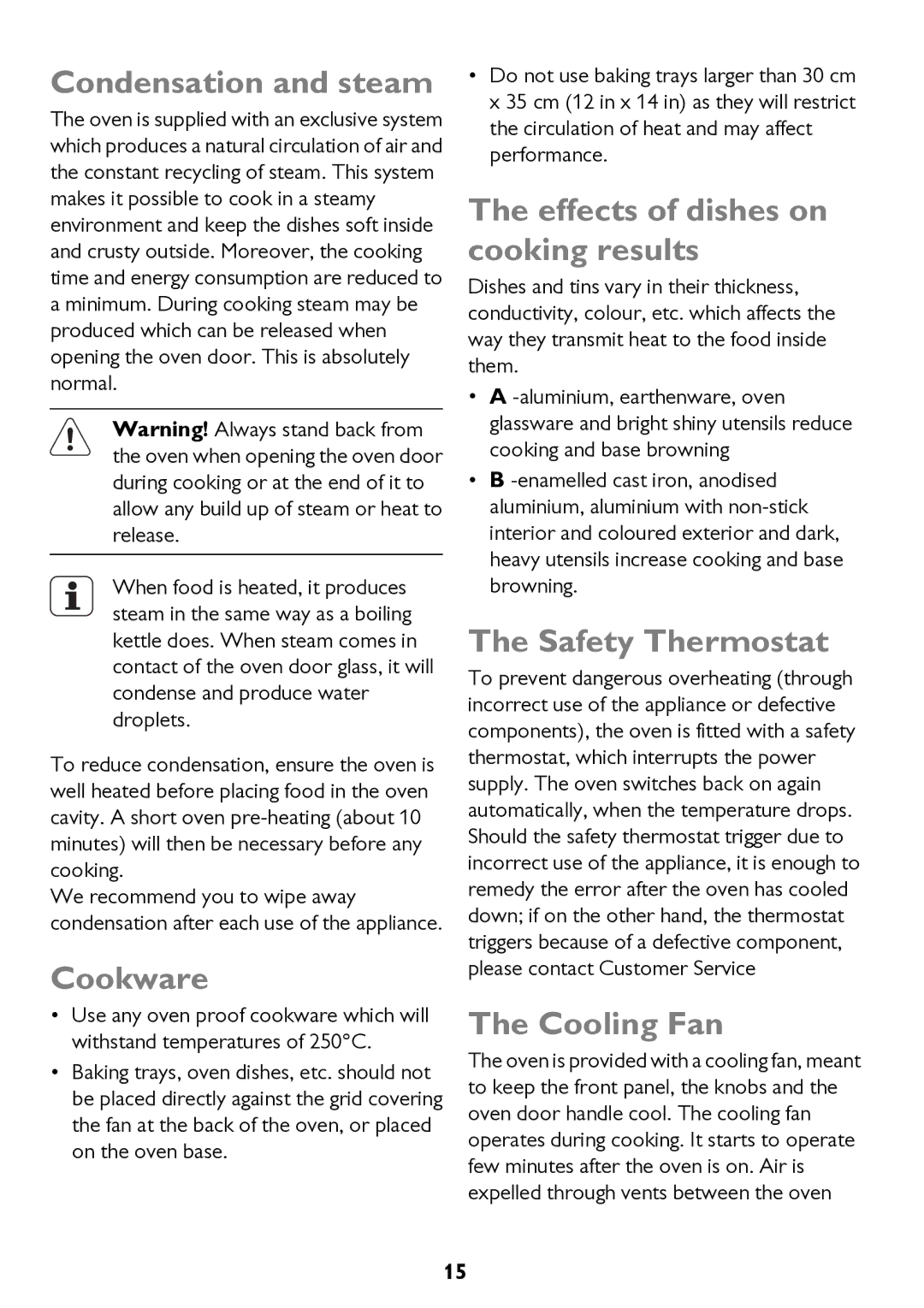JLBIOS662 specifications
The John Lewis JLBIOS662 is an advanced built-in oven that combines style, function, and cutting-edge technology, making it an excellent addition to modern kitchens. With a sleek design and user-friendly interface, this oven caters to both novice cooks and seasoned chefs alike.One of the main features of the JLBIOS662 is its impressive capacity, which provides ample space for cooking multiple dishes simultaneously. This makes it ideal for hosting gatherings or preparing family meals without any hassle. The oven's multifunctional capabilities allow users to choose from various cooking modes, including fan cooking, conventional heat, grill, and even pizza settings. This versatility ensures a range of culinary possibilities, whether baking pastries, roasting meats, or grilling vegetables.
The oven is equipped with an efficient fan system that promotes even heat distribution, resulting in perfectly cooked meals every time. Its precise temperature controls allow users to achieve accurate cooking results, which is essential for delicate dishes. Moreover, the JLBIOS662 features a smart timer that alerts users when their food is ready, preventing overcooking and ensuring optimal flavors.
In terms of technology, the JLBIOS662 boasts a modern digital display that simplifies navigation through its various settings and temperature controls. This intuitive interface enhances the cooking experience, allowing users to experiment with cooking techniques effortlessly. Additionally, the oven comes with built-in safety features such as a cool-touch door and automatic shut-off, providing peace of mind while cooking.
One standout characteristic of this oven is its energy efficiency. It has been designed to minimize energy consumption, aligning with sustainable practices and reducing utility bills over time. The JLBIOS662 also incorporates easy-clean pyrolytic functionality that burns off food residue at high temperatures, making maintenance a breeze.
Durability is another key aspect of the John Lewis JLBIOS662. Constructed from high-quality materials, this oven promises longevity and resilience, ensuring it remains a reliable kitchen appliance for years to come. Its elegant stainless steel finish adds a touch of sophistication, seamlessly blending with any kitchen decor.
In conclusion, the John Lewis JLBIOS662 is a remarkable built-in oven that embodies modern cooking technology, efficiency, and style. Its extensive features and exceptional performance make it a valuable asset for any culinary enthusiast looking to elevate their cooking experience.

